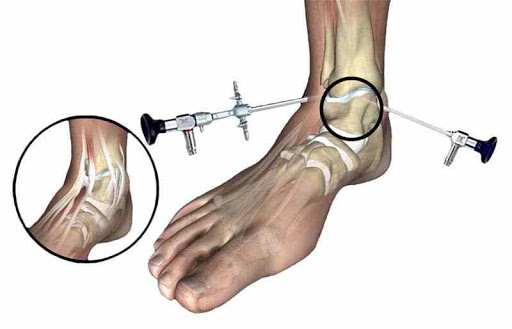ANKLE ARTHROSCOPY
Arthroscopy is commonly known as keyhole surgery. Ankle arthroscopy is a minimally invasive surgical procedure in which an arthroscope, a small tube with a light and video camera at the end, is inserted into the ankle joint to evaluate and treat a variety of conditions. Ankle arthroscopy has proven to be highly effective in managing various ankle disorders including ankle arthritis, ankle instability, ankle fracture, ankle cartilage injury and infections. The benefits of arthroscopy are:
-
Smaller incisions
-
Minimal soft tissue trauma
-
Less pain
-
Faster healing time
-
Lower infection rate
-
Less scarring
-
Earlier mobilization
-
Shorter hospital stay

